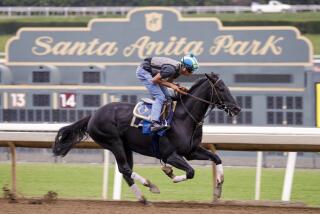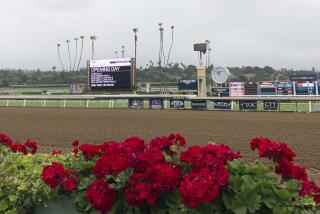Throttle Jockey: Yamaha YZF-R6 and the Suzuki GSX-R600 motorcycles
High-revving sport bikes tend to rattle cages. If it isn’t the high-pitched scream of their pipes, it’s the exposed skin and mohawked helmets of their riders that make drivers jump out of their bucket seats.
Powered with high-octane gas and run on seemingly higher levels of testosterone, the 600 cc class accounts for more than half of the supersport bikes sold in the U.S. It’s a highly competitive segment -- one that doesn’t just put a premium on “fast” but on fast-paced, every-other-year overhauls to keep up with the market’s expectations for trickle-down-from-the-track technologies and performance.
For 2008, the fight is between the sport bike bestsellers for Suzuki and Yamaha: the GSX-R600 and the YZF-R6. The two bikes have been locked in karmic battle since 2006, when they fell into the same reinvention schedule, pitting Suzuki against Yamaha on the even model years, just as Honda has been set up against Kawasaki to swirl nunchucks on the odd.
Commuting is the No. 1 use for 600 cc sport bikes. Even so, the racetrack is where both bikes are designed to shine. The GSX-R just adds a little more user-friendliness to the mix, whereas the YZF-R6 requires a little more finesse to access its powers.
Suzuki GSX-R600
“Race-track performance in a street-legal package” was Suzuki’s guiding principle for its 2008 overhaul of the “Gixxer” 600, which has been the bestselling sport bike in the U.S. since 2004 and the bestselling Japanese motorcycle overall as of 2007.
Being such a populist bike, the Gixxer has a different demographic profile than the R6. Its average rider is three years younger, three years less experienced and generally less inclined to take his bike to the track. It’s also a first bike for many riders. Suzuki’s redesign takes all those factors into consideration, making the Gixxer more street oriented and easy to ride.
There is no horsepower gain in the redesign. The biggest change on this 11-year-old model is an increase in the low to middle range of its power band (where most street riders ride) without sacrificing the top-end revs needed by racers.
Riding streets and canyons, I found the Gixxer’s torque wasn’t so torque-y that the bike wanted to launch out from under me. High-rpm downshifts were also worry free and smooth, thanks to a refined back torque limiter or slipper clutch.
The chassis on the new Gixxer is virtually unchanged. There’s a new aluminum subframe to help offset some of the weight gain necessitated by its new, catalyzed exhaust, but the biggest handling improvements are due to a new, electronically controlled steering damper.
For all the finessing of its under-the-hood technology, it’s funny that at least part of the Gixxer’s popularity comes from something seemingly mundane but incredibly important: its saddle. The Gixxer’s is 31.9 inches tall, an inch and a half lower than the R6.
Yamaha YZF-R6
“Razor-sharp handling” was the MO for this year’s R6 update, which, again, responds to the bike’s demographics. Because R6 riders tend to be slightly older (30), more experienced (nine years riding) and more inclined toward the track than the average 600 cc sport bike buyer, that’s where Yamaha’s taken its redesign.
Yamaha’s direction for the 9-year-old R6 is the opposite of the Gixxer’s. It’s become even more tunnel-visioned on the track. Where the Gixxer focuses on the bottom to middle of its power band, the R6 sets its sights on the middle and the top -- increasing the bike’s midrange pull and upper-end power with the help of new pistons that increase the engine’s compression ratio and a set of secondary fuel injectors that kick in at 6,000 rpm.
The biggest difference for me with the R6 versus the Gixxer is the throttle. It takes more skill and a real mastery of the friction zone to avoid over-revving on takeoff. Just 28% of R6 riders buy the bike as their first, but its primary use is commuting, which requires a lot of stops and starts, so newbies should beware.
Although more than 50 changes were made to the R6 engine, the most noticeable differences with the bike are in the chassis, which features a Yamaha first: The die-cast subframe is magnesium, which has a greater strength-to-weight ratio than the aluminum used on previous R6 models. The suspension is also modified to be more minutely adjustable, including the ride height.
The R6 is lightweight, responsive, flickable, yada yada -- but riders will want to keep moving because the engine throws some heat. After some serious canyon carving, my left leg got so hot I was almost inclined to try stunting. I wanted to stand on the saddle.
2008 Suzuki GSX-R600 Base price: $9,399Powertrain: Liquid-cooled, fuel-injected, four-stroke, DOHC, inline four-cylinder, four valves per cylinder, six-speedDisplacement: 599 ccSeat height: 31.9 inchesDry weight: 363 poundsRoad test MPG*: 35 (based on 209 miles traveled)2008 Yamaha YZF-R6 Base price: $9,599Powertrain: Liquid-cooled, fuel-injected, four-stroke, DOHC, inline four-cylinder, four valves per cylinder, six-speedDisplacement: 599 ccSeat height: 33.5 inchesDry weight: 366 poundsRoad test MPG*: 37 (based on 198 miles traveled)*Uses 91 octane gas
More to Read
Start your day right
Sign up for Essential California for news, features and recommendations from the L.A. Times and beyond in your inbox six days a week.
You may occasionally receive promotional content from the Los Angeles Times.






